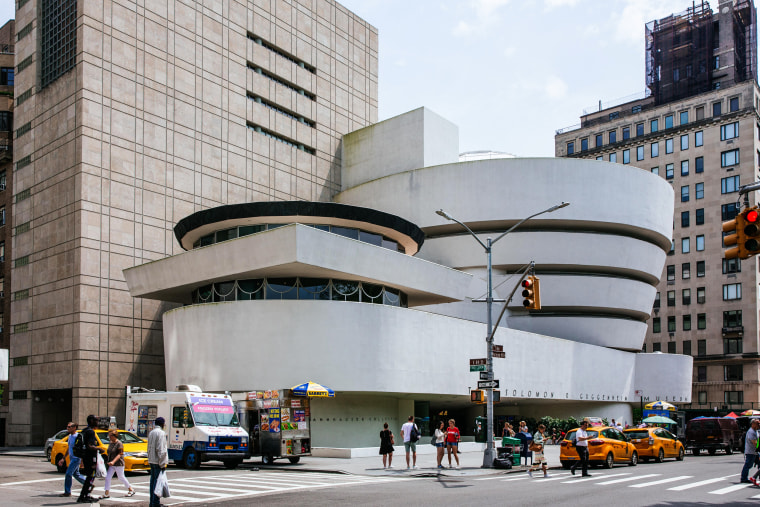New York museums are now required to disclose the histories of artworks that were stolen from Europeans, primarily Jewish people, during the Nazi era under a state law that passed this month.
The law requires New York museums to display signage alongside works of art from before 1945 that are known to have been stolen or forcibly sold under Nazi rule.
The Germans looted 600,000 works of art during World War II, according to the text of the legislation and expert testimony.
State law requires works that were created before 1945 that changed ownership in Nazi Europe to be registered in the Art Loss Register, a private database of more than 700,000 works of lost, stolen and looted art, according to ARTnews.
Over the past few decades, New York museums have been at the center of debates about who has rightful ownership of artworks that changed hands during the Nazi era.
In 2018, the Guggenheim Museum returned a 1915 painting depicting a group of nude soldiers in a shower to the surviving family members of the German Jewish art dealer Alfred Flechtheim, from whom the Nazis stole the painting, the New York Post reported.
The Metropolitan Museum of Art has also returned works from Nazi-era Europe over the years, including a snuffbox, two bronze medals and a plaquette to the heirs of a Munich-based art gallery that was extorted by the Nazi government, as well as a 16th century silver stem cup to the heirs of a Jewish couple murdered in a concentration camp in 1944.
New York museums have also successfully fought to keep allegedly looted art from the Nazi era in their halls.
Last year, a federal appeals court ruled that the Metropolitan Museum of Art can keep a $100 million Picasso painting that the family of the previous owner says was sold to fund the owner's escape from Nazi Germany, according to Artnet.
The Met has also paid settlements to keep a painting by the French Impressionist Claude Monet, among other works.
Descendants of people who fled Nazi Germany have unsuccessfully tried to obtain paintings by the French Impressionist Auguste Renoir and the German painter George Grosz from the Met and the Museum of Modern Art, respectively, that they say were forcibly sold and stolen, the New York Post reported.
And in 2007, the Museum of Modern Art and the Guggenheim filed a joint lawsuit over two Picassos after the nephew of the previous owner alleged that they were forcibly sold during the war. The suit was settled out of court, and the museums kept the works, according to ARTnews.
The Met, the Whitney Museum of American Art, the Museum of Modern Art, the Guggenheim and the Brooklyn Museum have not disclosed how they plan to comply with the new law, the New York City news site Gothamist reported.
The Museum of Modern Art has about 800 works "that were or could have been in Continental Europe during the Nazi era," according to its website, which notes that museum researchers continue to research the ownership records for the artworks.
The Guggenheim says its research staff "initially identified approximately 275 works that are known to have, or might reasonably be thought to have, changed hands in continental Europe between 1932 and 1946," adding that the research continues.
The Brooklyn Museum and the Met also have research projects focused on identifying artworks that may have been looted or forcibly sold under Nazi rule, according to their websites.
The recently passed legislation was part of a package of bills Gov. Kathy Hochul signed into law this month to bolster education about the Holocaust and honor survivors.
The two other bills that became law as part of the package require the state Education Department to assess how schools teach the Holocaust and require the state Financial Services Department to maintain and annually update a list of financial institutions that waive wire transfer or processing fees for Holocaust reparations payments to survivors, a third of whom live in poverty in the U.S., according to the legislation.
New York is home to nearly 40,000 Holocaust survivors, the governor's office said in a news release this year.
